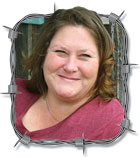It’s time for our annual Women in Agriculture edition. This edition features some super ladies, each with a unique story. I am proud to feature these ladies and to salute all women rooted in agriculture.
Many people have not considered women as farmers, ranchers, or decision-makers for generations. After all, farmin’ and ranchin’ is “man’s work.” Women were far too “brittle” for that kind of labor.
Today, we have a growing number of women as primary operators and many gender-based agricultural roles are fading away. However, I am the only one who can do laundry at my house. I’m sure I’m not alone in that struggle.
I recently kicked off my fair season, and the number of girls showing cattle outnumbered the boys at the first show. There were 15 or 16 girls in the senior showmanship competition and not a single boy. A friend of mine’s daughter, who is 11, handled her big, 16-month-old Brahman bull like a pro. I watched her mother do the same thing when she was that age, and I have seen her grandma handle uncooperative cattle, so it runs in the family.
If you ask my young nieces and great-nieces what they want to be when they grow up, their answers will vary, but they all want to be farmers, too. Thanks to their parents, they all know food doesn’t just come from the grocery store, and they understand the importance of farming.
Journalism was once a male-dominated field. Female journalists were pegged as “society” writers or gave helpful household hits. Those roles have also changed over the generations. If you look back at the history of OFN, every person who has held my position has been a woman.
The most recent census data reports that there are 1.2 million female farmers in the U.S., making 36 percent of the country’s farmers women. I question the result that only 9 percent of farms are run by women. There is still a big assumption that women are not “operators” if they own their farms or ranches with their husbands or male counterparts. I know plenty of women who take the lead on their farms.
We aren’t just seeing the role of women in agriculture grow in the United States. According to globalagriculture.org, women are rearing poultry and small livestock and growing food crops, contributing 60 to 80 percent of food production in developing countries. In many farming communities, women are the primary custodians of knowledge on crop varieties.
Farm and ranch ladies may be underestimated and under appreciated, but 2026 will be our year.
On May 14, the UN General Assembly passed a resolution introduced by the United States declaring 2026 as the International Year of the Woman Farmer. According to a press release, this worldwide observance will call attention to women’s vital role in global agrifood systems, raise awareness of the unique challenges women in agriculture face, and catalyze action to help address these challenges. It’s about time.
We shouldn’t have to wait a year and a half or need a UN resolution to celebrate women in agriculture; they should be honored every day.
Thank you to all women involved in agriculture, regardless of your role. Without you, a whole lot more people would go hungry.
Julie Turner-Crawford is a native of Dallas County, Mo., where she grew up on her family’s farm. She is a graduate of Missouri State University. To contact Julie, call 1-866-532-1960 or by email at [email protected].







